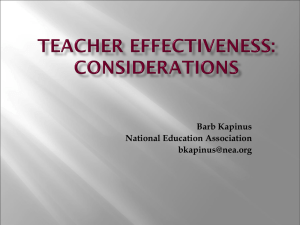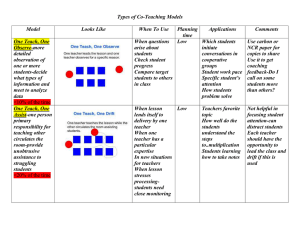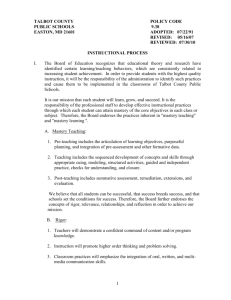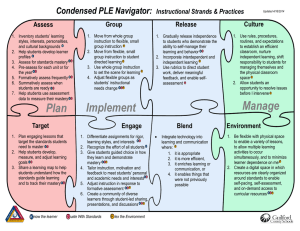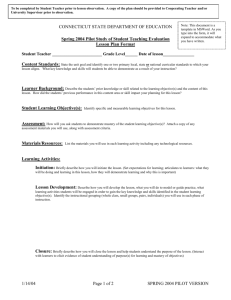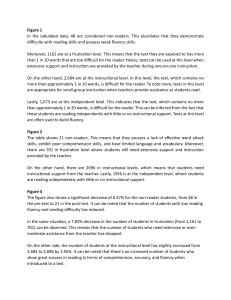Common Core Planning – Analyzing Units & Lessons – Unit
advertisement
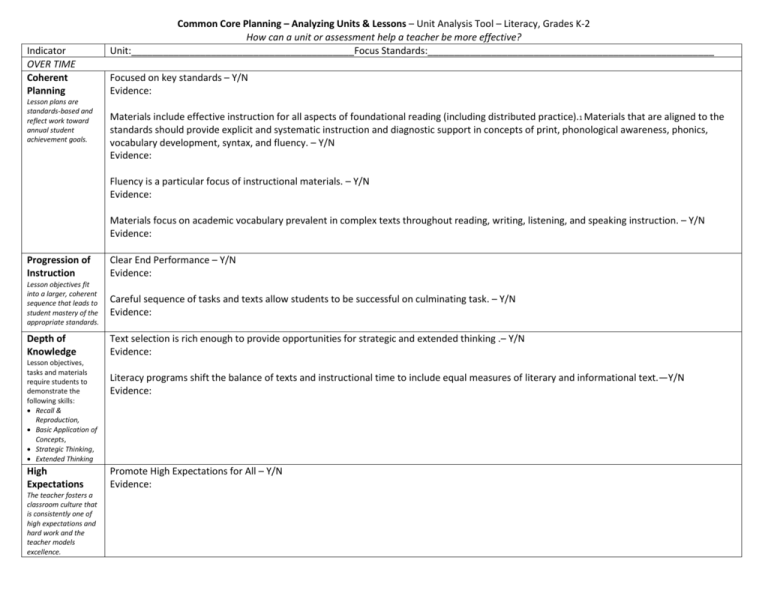
Indicator OVER TIME Coherent Planning Lesson plans are standards-based and reflect work toward annual student achievement goals. Common Core Planning – Analyzing Units & Lessons – Unit Analysis Tool – Literacy, Grades K-2 How can a unit or assessment help a teacher be more effective? Unit:__________________________________________Focus Standards:______________________________________________________ Focused on key standards – Y/N Evidence: Materials include effective instruction for all aspects of foundational reading (including distributed practice).1 Materials that are aligned to the standards should provide explicit and systematic instruction and diagnostic support in concepts of print, phonological awareness, phonics, vocabulary development, syntax, and fluency. – Y/N Evidence: Fluency is a particular focus of instructional materials. – Y/N Evidence: Materials focus on academic vocabulary prevalent in complex texts throughout reading, writing, listening, and speaking instruction. – Y/N Evidence: Progression of Instruction Clear End Performance – Y/N Evidence: Lesson objectives fit into a larger, coherent sequence that leads to student mastery of the appropriate standards. Careful sequence of tasks and texts allow students to be successful on culminating task. – Y/N Evidence: Depth of Knowledge Text selection is rich enough to provide opportunities for strategic and extended thinking .– Y/N Evidence: Lesson objectives, tasks and materials require students to demonstrate the following skills: Recall & Reproduction, Basic Application of Concepts, Strategic Thinking, Extended Thinking High Expectations The teacher fosters a classroom culture that is consistently one of high expectations and hard work and the teacher models excellence. Literacy programs shift the balance of texts and instructional time to include equal measures of literary and informational text.—Y/N Evidence: Promote High Expectations for All – Y/N Evidence: Understanding of Growth Teacher can articulate specifically (and with evidence) whether or not each student has internalized gradelevel standards and, if not, what s/he still needs to learn. Using Data Teacher tracks assessment data to understand each student’s progress toward mastery and uses results to guide planning and instruction. IN ONE LESSON Questions & Tasks Questions and tasks ensure student comprehension and ask for application, analysis and/or synthesis. Ways to Measure Growth – Y/N Evidence: Materials offer assessment opportunities that measure progress in the foundation of reading. – Y/N Evidence: Use Data to Inform Instruction – Y/N Evidence: Opportunities for Multiple Reads – Y/N Evidence: Questions and tasks cultivate students’ abilities to ask and answer questions based on the text .– Y/N Evidence: Precision & Evidence Teacher and students require precision and evidence in tasks and responses. Tailored Instruction Teacher tailors instruction to move all students toward mastery. Instructional Supports & Scaffolds – Y/N Evidence: Appropriate supports in reading, writing, listening and speaking for students who are ELL, have disabilities, or read well below the grade level band.—Y/N Evidence: Extensions and/or more advanced text for students who read well above the grade level text band.—Y/N Evidence: Evidence of Universal Design for Learning Multiple options for how instruction is presented, Y/N Multiple options for how students express their knowledge - Y/N Multiple options for how teachers engage students in their learning, tailored to meet individual student needs. - Y/N Evidence:
